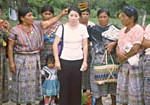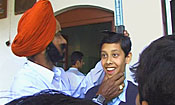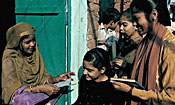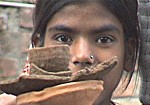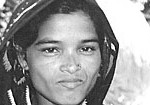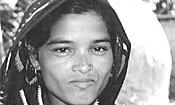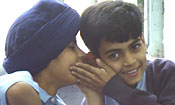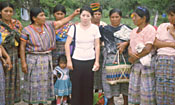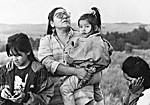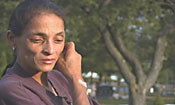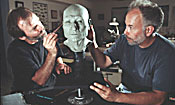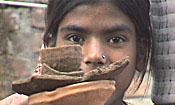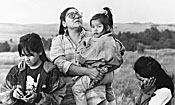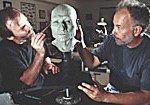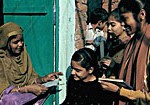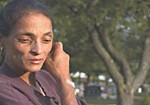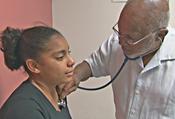Roots of Health
Product Description
At a time when health care dominates the news, there is a strong sense that good health is all about access to doctors, hospitals, medicine, and insurance. This thought-provoking and insightful documentary demonstrates otherwise. Using incisive case studies from around the world, it explores how people’s health and well-being is primarily determined by where they live, their educational, social, and economic status, and the degree of control they have over their lives.
The film illustrates that these are the true roots of health – though generally overlooked in the contentious national debate over health care – and they can be improved dramatically for whole communities through social and political action.
Roots of Health features three powerful stories filmed in London, England, Ahmedabad, India, and Oakland, California. Each story looks at the socio-economic conditions that contribute to illness, and how people can take charge of their own lives and health.
In London, Sir Michael Marmot heads an international commission that has investigated what are called the “social determinants” of health. He shows how life expectancy can differ by 11 years in a short journey from a wealthy section of London to a poor one, and goes on to spell out why. His famous research on English civil servants, the Whitehall Studies, revealed the social gradient in health: Those at the top of the power spectrum had the best health, those at the bottom, the worst. But most surprisingly, those in the middle had worse health than those at the top, findings that held over heart disease, cancer, and diabetes. His findings led researchers to the understanding that in addition to genetics, behavior, and access to care, a person’s health has much to do with one’s status and sense of control over life.
The film also profiles two single mothers who live in a housing project in a low-income section of London. They are determined to break the chain of circumstances that might otherwise keep themselves and their young children in poverty, setting them up for a lifetime of ill health. The film shows how early intervention with stimulating educational activities prepares their kids to gain vocabulary, learn to read, and to manage what is called “toxic stress,” which can undermine a child’s healthy brain development.
Nearby, in another low-income London setting, residents trade talents and tasks to maximize the assets in their lives, promoting mental health and well-being among people who don’t have a lot of money. It turns out that even in poor communities, a strong social network can make a big difference in reducing isolation and giving people a sense of control over their lives.
In Ahmedabad, India, a quiet revolution has been brewing since the 1970s. Here a group of poor women banded together to create SEWA, the Self-Employed Women’s Association, the brainchild of lawyer Ela Bhatt. Gaining formal status for street vegetable vendors was one of the organization’s first accomplishments. But soon it became clear that what the women truly needed was access to capital. Middle-men were charging interest rates of 10% per day, which added up to 3650% per year. And so the idea of a bank for poor, illiterate women was born. Four thousand members contributed 25 cents each, and SEWA bank opened with $1,000 in capital. The members guaranteed each others’ micro-loans, enabling them to create small money-making enterprises. Today the bank has more than $24 million in assets, and issues hundreds of thousands of small loans.
But what do loans have to do with health? SEWA coordinator Mirai Chatterjee says, “Work and health are inextricably linked. You can’t tease them apart. The women say, if we work, we survive. Our bodies are all we have.” So SEWA set about to help women in a number of ways, including setting up childcare programs, providing modest health insurance and emergency transport, and improving access to clean water and sanitation in slum areas. Since then, incidence of waterborne disease has dropped dramatically. And a less tangible benefit has resulted as well: Kantaben, a poor woman who recycles trash at the town dump, says with pride: “I was once ashamed of my work. But now there is no more shame. What matters is that we earn honest money. And we can now afford to send our granddaughters to school.” Kantaben carries herself with pride, and says that the stress of her work has diminished now that she has more hope for her family’s future.
Social and environmental justice take center stage in East Oakland, California, where Dr. Anthony Iton heads the Alameda County Public Health Department. Says Dr. Iton: “Public health experts have been good at speaking the truth, talking about how the facts show that health disparities are getting worse, that there are significant burdens of disease that are distributed according to race. What we haven’t done well is talk about power, and why this truth is the reality we have to contend with.”
Dr. Iton and community organizers in East Oakland are fighting high rates of asthma that are believed to be associated with air pollution from diesel truck traffic at Oakland’s seaport — also the economic engine of the community. Margaret Gordon, of the West Oakland Environmental Indicators Project, knows this all too well: “I’ve been here for 15 years. I have asthma. I have ten grandchildren; five of them have asthma.” The film shows how the health department has helped to bring the community together to have a stronger voice in what happens in their neighborhoods, and to work with the Port of Oakland to bring about ways to improve air quality.
Meanwhile, the idea of creating “green” jobs for Oakland’s residents has taken hold here, through the work of researcher Raquel Rivera Pinderhughes and Van Jones, founder of Green for All. Training programs to help people living in poverty to gain skills such as retrofitting buildings with solar panels are giving poor Oakland residents new hope for the future.
Roots of Health will engage and inspire students and engender thought, analysis, and classroom discussion. It will powerfully enhance a variety of classes in sociology, public health, ethnic studies, women’s studies, cultural anthropology, American studies, and international development and environmental issues. It was produced by Linda Harrar Productions, creators of the acclaimed Six Billion and Beyond. The DVD was authored, with menu and chapter markers, by the producer. It is closed-captioned.

